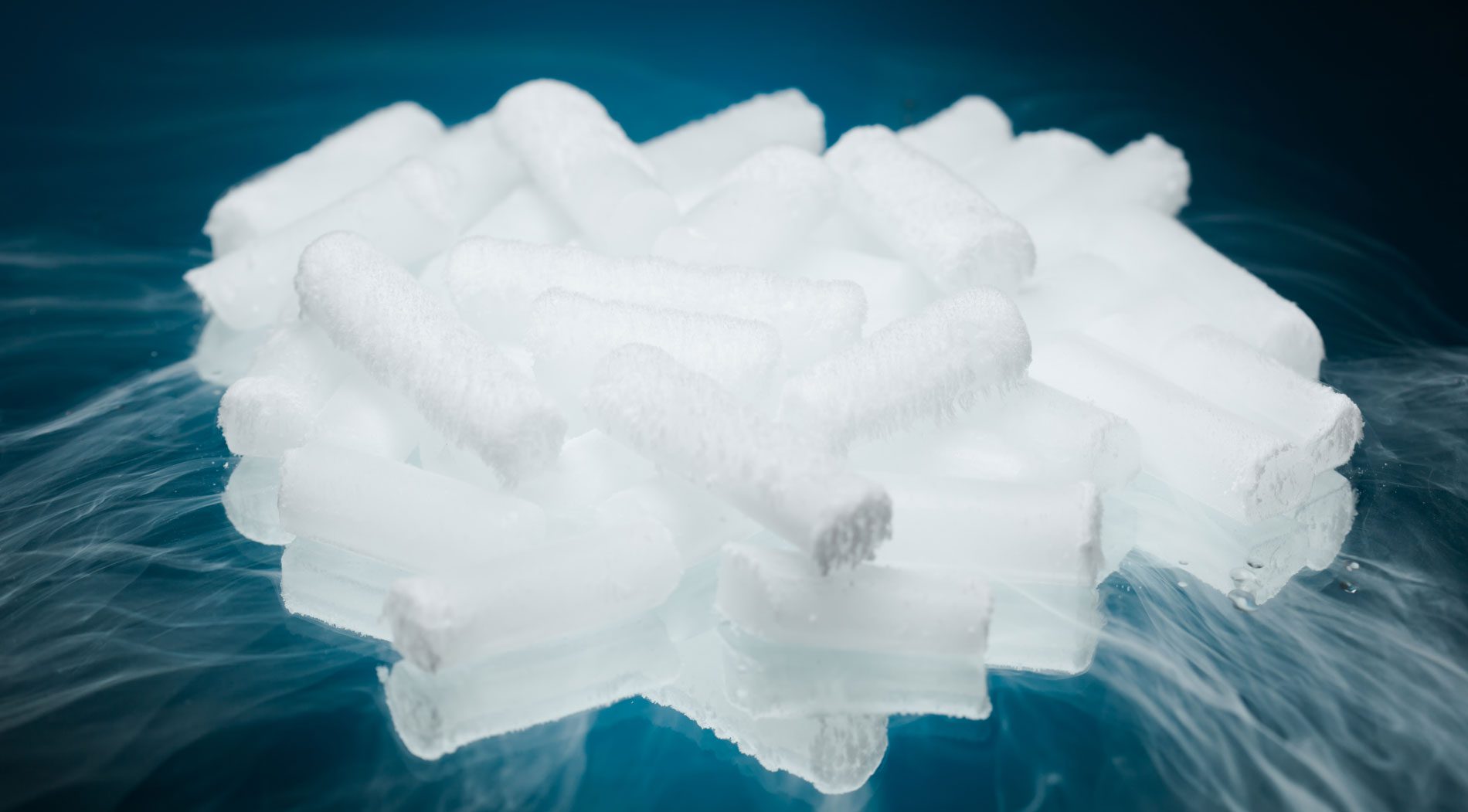About Dry Ice
Dry ice is solidified carbon dioxide (CO2). Distinct from regular ice, which exists at temperatures of 32°F (0°C) and below, dry ice is extremely cold, -109°F (-79°C). Unlike water ice, dry ice does not melt. Instead, it sublimates (changes directly from solid to gas), releasing CO2. Carbon dioxide vapor is substantially heavier than air. In confined, poorly ventilated spaces, it can displace air, causing asphyxiation.
Safe Handling
AVOID CONTACT WITH SKIN AND EYES and NEVER HANDLE DRY ICE WITH YOUR BARE HANDS! Dry ice is extremely cold, -107F (-79C) and can cause severe frostbite within seconds of direct contact. (Frostbite is a freezing injury resembling a burn.) Always wear insulated gloves. Safety glasses, long-sleeved shirt, long pants, and shoes are also recommended. Use tongs to handle blocks of dry ice.
DO NOT PUT DRY ICE IN YOUR MOUTH OR OTHERWISE INGEST IT. If dry ice is accidentally ingested, it can cause severe internal injury. Never put dry ice in beverages to cool them.
KEEP OUT OF REACH OF CHILDREN. Only adults should handle dry ice. Dry ice should never be left unattended with children or pets.
TRANSPORT DRY ICE IN YOUR VEHICLE TRUNK OR TRUCK BED. DO NOT USE DRY ICE IN CONFINED AREAS. Dry ice releases heavy carbon dioxide vapor that can cause rapid suffocation. Leave windows open for fresh air circulation. Never leave dry ice in a parked passenger vehicle. Sublimation of dry ice in a closed passenger vehicle can result in the accumulation of dangerous concentrations of asphyxiating carbon dioxide.
NEVER STORE DRY ICE IN GLASS OR OTHER SEALED (AIRTIGHT) CONTAINERS OR COOLERS. Storage in a sealed container can result in a rupture or explosion of the container from over-pressurization.
DO NOT PLACE DRY ICE IN DIRECT CONTACT WITH PERISHABLE FOODS OR BOTTLED/CANNED BEVERAGES. Produce may sustain severe freezer burns and bottle/canned beverages may split or explode.
Disposal of Unused Dry Ice
Allow the unused dry ice to sublimate or evaporate to the atmosphere in a well-ventilated area where no build-up of carbon dioxide vapor can occur.
